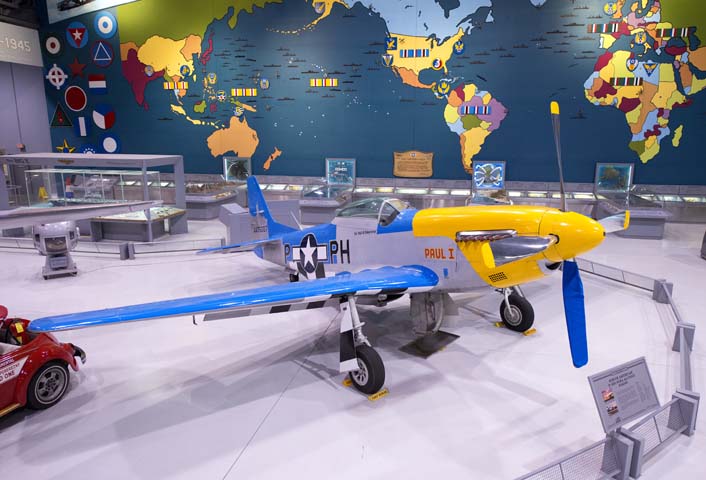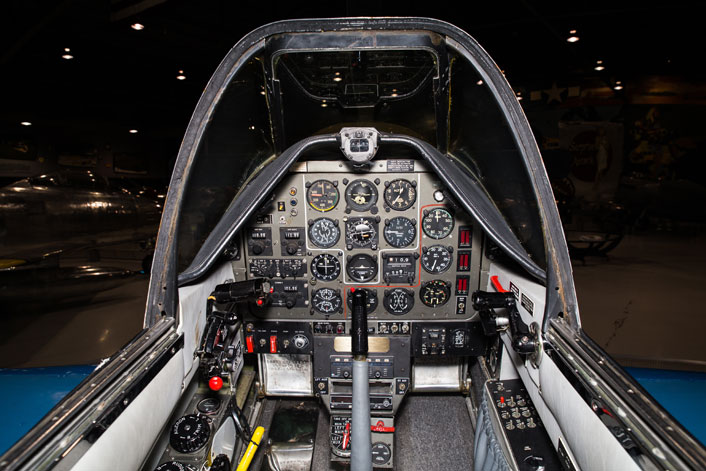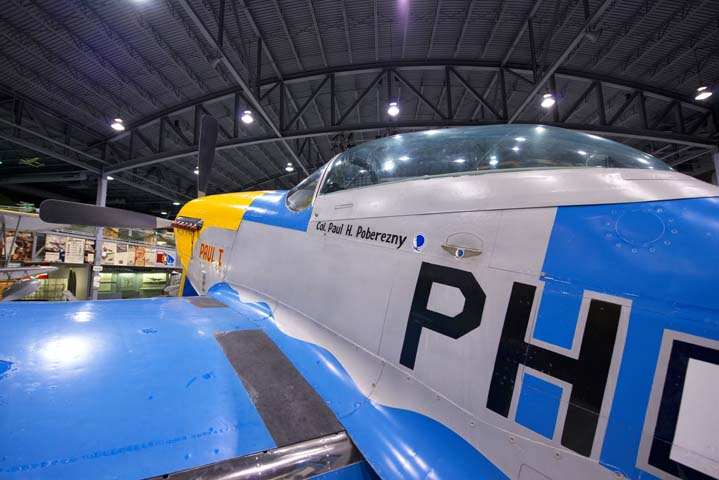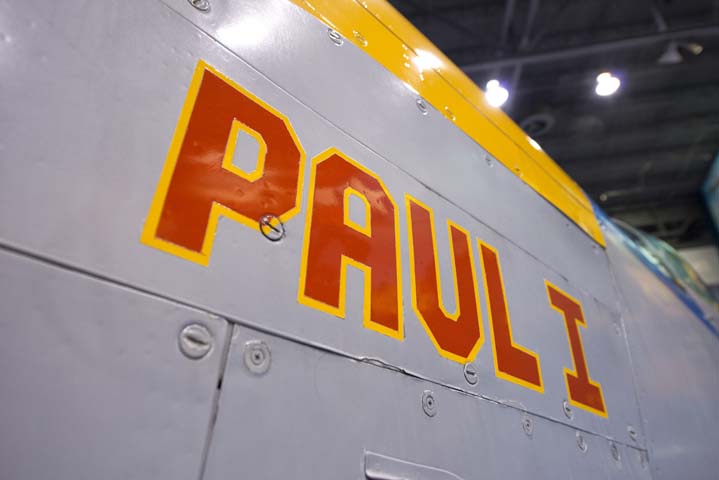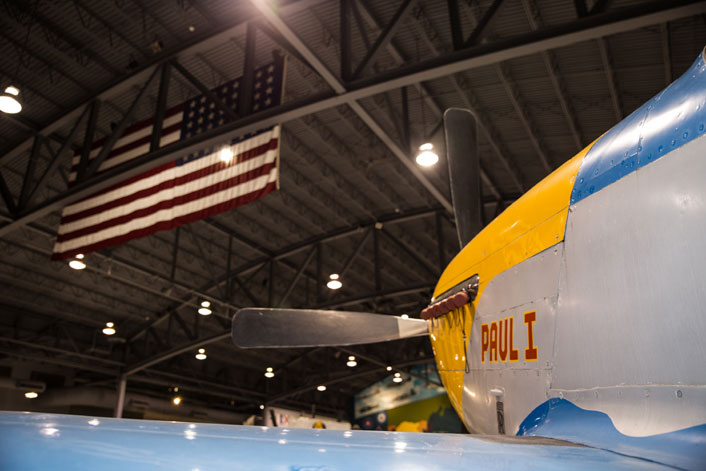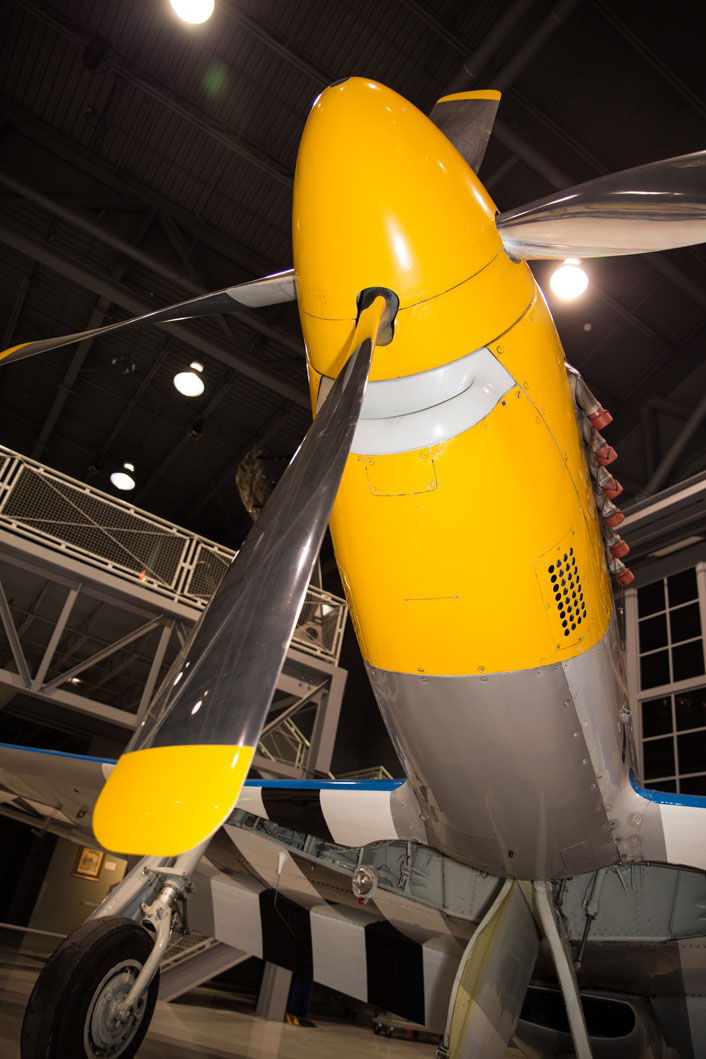1944 North American F-51D Mustang - N3451D
Location: Eagle Hangar
In 1939, with the shadows of World War II covering Europe, the British Royal Air Force began looking for a new plane to increase its fighter strength. The RAF approached North American Aviation with a request to build Curtiss P-40s. North American responded with an offer to build a completely new fighter incorporating the latest aerodynamic refinements and using the same Allison engine as the P-40. This marked the birth of the North American Mustang.
The prototype, designated NA-73, was assembled just 102 days after the contract was signed. Delays with the engine meant that the first flight took place about six weeks later, on October 26, 1940. While the NA-73 was being designed, the U.S. Army requested two airplanes for evaluation purposes which were designated XP-51, the XP meaning Experimental Pursuit. The British dubbed their new fighter the Mustang Mk.1 and, after producing a small number of A-36 Apache dive bombers, the U.S. adopted the name Mustang as well.
The P-51 was immediately recognized for superb performance at low altitudes. Tests revealed, however, a lack of performance at high altitudes that severely restricted the airplane’s use for escort and interception work. A Rolls-Royce test pilot, Ronald Harker, was among the first to conclude that what the Mustang needed to realize its full potential was the Merlin engine. During the winter of 1942-43, Rolls Royce pilots test flew the Mustang Mk.X and sent their data back to North American, which became the basis for production of Merlin Mustangs, designated P-51B. Luxury automobile manufacturer Packard was licensed to build the Merlin engine in the United States.
The Merlin proved to be a tremendous success, and evolution of the Mustang continued through the B and C models, followed by the major redesign which became the now iconic P-51D with its signature teardrop canopy. A total of more than 15,000 Mustangs were built, and are considered by many to be among the best propeller-driven fighters in history.
The P-51 was one of the first fighters to use a laminar-flow airfoil, which became standard on most later, high performance fighters. This wing design, along with the low drag airframe, resulted in very high speeds. In addition, a large fuel capacity, coupled with external fuel tanks, allowed the Mustang a range of more than 2,000 miles, making it possible to escort bombers all the way from England to Germany.
In 1948, shortly after the creation of the U.S. Air Force as a separate service, they introduced a new system of designation, moving from P for Pursuit to F for Fighter. This means that the Mustang in the EAA collection was a P-51 when it was manufactured in 1944, but when it left military service it had been re-designated as an F-51. In the mid-’60s, it was converted to a Cavalier Mustang by Trans-Florida Aviation, the most visually distinctive modification being the taller tail.
Its serial number is 44-75007N, its civilian registration is N3451D, but this airplane is best known by the name on the nose, Paul I. For more than 25 years, beginning with the airplane’s donation to EAA in 1977 by Robert Love of the Pacific Military Air Museum, EAA Founder Paul Poberezny flew the Mustang regularly at air shows and fly-ins, not to mention the annual EAA convention in Oshkosh. Paul even flew the Mustang in air races in Reno, Nevada, and Homestead, Florida, before retiring it to the museum’s Eagle Hangar in 2003.
Aircraft Make & Model: North American F-51D-30NA Mustang
Length: 32 feet 4 inches
Wingspan: 37 feet
Height: 13 feet 8 inches
Maximum Gross Weight: 12,100 pounds
Empty Weight: 7,635 pounds
Seats: 2
Powerplant: Packard V-1650-7 Merlin
Horsepower: 1,695
Cruise Speed: 370 mph at 20,000 feet
Maximum Speed: 437 mph at 25,000 feet
Service Ceiling: 41,900
Range: 2,055 miles (with drop tanks)
